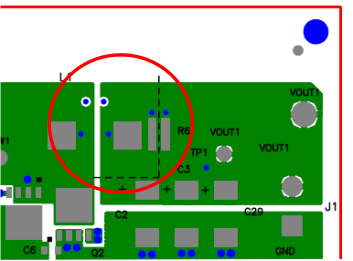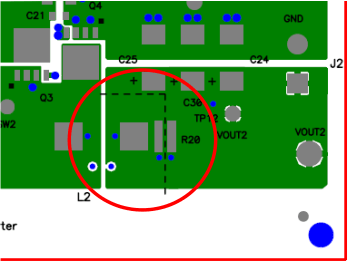SLVU251B June 2008 – February 2022 TPS51220
5.3 Current-Sensing Selection
The current-sensing scheme can be set by the external current sensing devices, using some resistors on the EVM.
Default setting is Inductor DCR sensing
Table 5-3 Current-Sensing Scheme
Selection (CH1)
| R8 | R29 | R35 | R36 | R6 | R7 | R25 | |
|---|---|---|---|---|---|---|---|
| Inductor DCR | Put on(1) | Put on(1) (if necessary) |
Put on(1) | Put on(1) | Open | Open | Open |
| External Resistor | Put on(1) | Put on(1) (if necessary) |
Put on(1) | Open | Put on (1) Cut trace |
Open | Open |
(1) "Put on” means add appropriate resistor.
Table 5-4 Current Sensing Scheme
Selection (CH2)
| R18 | R28 | R33 | R37 | R20 | R19 | R26 | |
|---|---|---|---|---|---|---|---|
| Inductor DCR | Put on(1) | Put on(1) (if necessary) |
Put on(1) | Put on(1) | Open | Open | Open |
| External Resistor | Put on(1) | Put on(1) (if necessary) |
Put on(1) | Open | Put on (1) Cut trace |
Open | Open |
(1) "Put on” means add appropriate resistor.
For external resistor sensing, cut the trace as follows.
 Figure 5-1 (CH1)
Cut Trace Underneath R6
Figure 5-1 (CH1)
Cut Trace Underneath R6 Figure 5-2 (CH2)
Cut Trace Underneath R20
Figure 5-2 (CH2)
Cut Trace Underneath R20